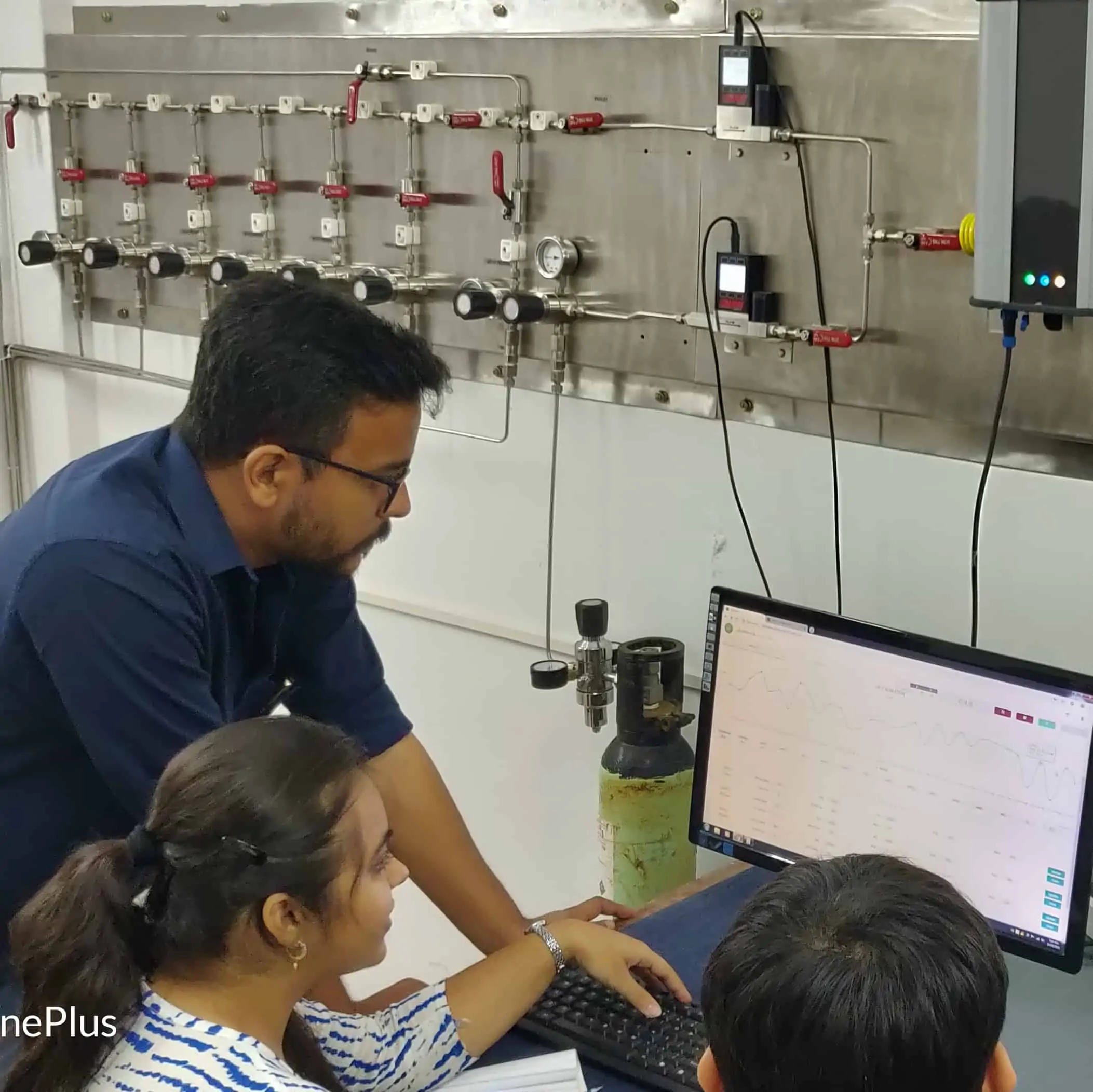In this era of increasing environmental awareness. When we discuss air pollution, our minds often gravitate to visible contaminants or toxic emissions. However, although less discussed, odour pollution can be equally distressing and damaging. This blog aims to illuminate odour pollution, its effects, sources, and possible solutions. We will also delve into how advanced technology, like that developed by Oizom, can play a vital role in monitoring and managing this form of pollution.
What is Odour Pollution?
At its core, odour pollution involves unwanted or offensive smells deemed objectionable by individuals. These unpleasant odours often stem from industrial processes, agricultural activities, sewage treatment, landfills, etc. Unlike more evident forms of pollution, odour pollution is somewhat subjective because its perception can vary between individuals. However, prolonged exposure can have severe repercussions irrespective of personal tolerance levels.
Effects of Odour Pollution on Health
Though sometimes dismissed as a minor inconvenience, odour pollution can substantially impact human health. This form of pollution, caused by the presence of molecules in the air that our noses detect as smells, can range from merely unpleasant to severely harmful. Its effects on health can be broadly divided into psychological and physiological impacts.
Psychological Impacts:
- Mood and Mental Well-being: Continuous exposure to unpleasant odours can lead to mood swings, irritability, and heightened stress levels. Such conditions may escalate to more severe mental health issues such as anxiety, depression, or insomnia. For instance, individuals living near landfills or sewage treatment plants often report higher anxiety levels, not just because of the foul smells but also the perceived health risks.
- Decreased Quality of Life: An individual’s overall well-being and quality of life can plummet when subjected to constant malodorous environments. This can lead to reduced social interactions, as individuals might avoid inviting friends or family over, leading to feelings of isolation.
Physiological Impacts:
- Respiratory Issues: Many foul smells, especially those from industrial processes, are associated with harmful chemicals. Inhaling these can lead to respiratory problems such as asthma, bronchitis, or other chronic respiratory diseases.
- Nausea and Physical Discomfort: Persistent foul odours can cause physical discomfort. This includes symptoms such as headaches, nausea, and dizziness. For instance, the smell of rotting garbage can lead to persistent nausea, making it hard for individuals to remain outdoors or even eat.
- Long-term Health Risks: Extended exposure to specific odorous compounds, especially in regions with poor air quality, can lead to more severe health issues. These include cardiovascular diseases or an increased risk of cancer, especially if the odour source is toxic or carcinogenic.
Causes and Sources of Odour Pollution
The modern, industrialised world produces many odours with its complex processes and systems. Some are harmless by-products, while others indicate more significant environmental problems. Here’s a look at the primary culprits behind odour pollution:
Industrial Processes: Factories, especially those in the chemical, rubber, and food processing industries, often emit gases as by-products. These gases, while sometimes non-toxic, can produce pungent smells. However, certain processes release volatile organic compounds (VOCs), which can be both odorous and harmful.
Agriculture: Large-scale animal farms produce significant waste, especially poultry and pig farms. This waste releases ammonia, methane, and other gases which have distinct and often unpleasant odours.
Waste Management: Landfills are perhaps the most commonly recognized source of odour pollution. As organic matter decays, it releases gases like methane, which has a distinct odour. Sewage treatment plants, while essential, are also significant sources of odorous gases.
Automobile Emissions: Vehicles, especially those running on diesel, emit various gases, including sulphur compounds. These can contribute to both odour and more significant air quality issues.
Natural Causes: Not all sources of odour pollution are man-made. Algal blooms, for instance, can produce a strong, musty smell. Certain natural events, like the decay of organic matter in wetlands, can also produce distinct odours.
Monitoring Odour Pollution
In the age of advancing technology and increasing environmental awareness, monitoring air quality is no longer limited to measuring the concentration of common pollutants such as CO2, NO2, or particulate matter. Odour pollution, with its subtle yet pervasive effects, has emerged as a crucial component in environmental monitoring. Ensuring effective odour control requires a comprehensive understanding of the sources, dispersion, and impact of these odours on both human and environmental health. Here’s an exploration of how odour pollution is monitored in our modern world.
- The Significance of Monitoring:
Before diving into the methodologies, it’s imperative to understand the significance of monitoring odour pollution. Unlike other pollutants that can be directly harmful, odours can have indirect effects. These range from deteriorating mental well-being, as discussed previously, to being indicative of other harmful pollutants in the atmosphere. Hence, monitoring odours is about managing discomfort and broader environmental and public health objectives.
- Methods of Monitoring:
- Olfactometry: This is the traditional method of measuring odours, where human panellists assess the quality of air samples in controlled conditions. While this method takes advantage of the human nose’s sensitivity, it’s subjective, as odour perception varies among individuals.
- Electronic Nose (e-nose): An advanced technological tool that mimics the human sense of smell. Equipped with a variety of sensors, it detects and identifies odour compounds. The e-nose provides a faster, more objective analysis than olfactometry, making it an attractive tool for real-time monitoring.
- Gas Chromatography: This analytical method identifies and quantifies volatile organic compounds (VOCs) in an air sample. It’s especially useful for tracking odour emissions from industrial processes.
- Sensor Arrays: These are networked systems of multiple sensors placed across a particular area, especially around potential odour sources like factories or landfills. These sensors can track the intensity and dispersion of odours, providing valuable data for mitigation strategies.
- Data Interpretation and Management:
Merely collecting data is not enough. Using software tools, data from various monitoring systems are aggregated, analyzed, and visualized meaningfully. These interpretations can:
- Pinpoint sources of odour pollution, leading to targeted interventions.
- Predict potential odour pollution events based on historical data.
- Enable better urban planning by understanding the dispersion patterns of odours.
- The Role of Community:
Given the subjective nature of odour perception, community involvement becomes an invaluable resource. Citizen-science initiatives, where residents report odour episodes, can complement data from more sophisticated systems. These reports can be collated to discern patterns and potential odour sources that might not be evident through technical means alone.
- Advancements in Remote Sensing:
Technological innovations, including satellite and drone imagery, are being researched for their potential to monitor larger areas for odour pollution, especially in regions where installing traditional sensors might be challenging.
- Regulatory Frameworks:
Effective monitoring also requires robust regulatory frameworks. These set permissible limits for odour emissions, establish monitoring standards and ensure compliance. Regulations also dictate how monitoring data should be reported and acted upon, ensuring transparency and accountability.
Environmental Consequences of Odour Pollution
Odour pollution, primarily viewed through the lens of human inconvenience or health implications, also poses significant threats to the environment. Such concerns extend beyond just the displeasing aroma and dive deep into the ecological and long-term impacts on biodiversity.
Ecological Impacts of Odour Pollution on Local Ecosystems
Alteration of Habitats: Odours, especially those resulting from pollutants, can alter the quality of air and water in a given habitat. Such changes can affect the natural behaviours of wildlife, leading to migration or adaptations that may not be conducive for their survival.
Impact on Aquatic Life: Odours resulting from industrial waste or sewage runoff entering water bodies can indicate the presence of chemicals harmful to aquatic life. For instance, chemicals that exude strong odours can deplete the oxygen in water, posing a threat to fish and other marine organisms.
Plant Health: Certain odourous pollutants, especially from factories, can affect plant health by inhibiting photosynthesis or inducing toxic reactions. Over time, this can disrupt the balance of the local ecosystem, as plants form the base of the food chain.
Animal Behaviour Disruption: Odours can significantly impact animal behaviours, especially in those species that rely heavily on their sense of smell for survival activities like hunting, finding mates, or marking territory. Anomalies in these behaviours can have cascading effects on the ecosystem.
Long-term Effects of Odour Pollution on Biodiversity
Species Decline: Continuous exposure to pollutants that cause odour can result in declining populations of sensitive species, both flora and fauna. Over time, this can lead to local extinctions, severely affecting the ecosystem’s balance.
Genetic Changes: Prolonged exposure to odour pollutants, especially in small or isolated ecosystems, can lead to genetic changes in species as they attempt to adapt. While adaptation is a natural process, artificially induced changes due to pollutants can have unpredictable results on the ecosystem.
Food Chain Disruptions: As primary producers like plants are affected by odour pollutants, there can be cascading effects up the food chain. Herbivores might face food shortages, which in turn affects the predators.
Strategies for Odour Control and Mitigation
Addressing the multifaceted issue of odour pollution requires a strategic blend of technology, policy, and community engagement. Given its pervasive nature and diverse sources, control and mitigation strategies must be tailored to specific scenarios.
Adoption of Advanced Technology: Oizom offers various air quality monitoring solutions that are crucial in identifying, quantifying, and tracking odour pollutants. By leveraging such advanced tools, industries and governments can ensure compliance with regulations and proactively address potential pollution sources.
Scrubbing and Filtration Systems: Especially relevant for industries, these systems can capture and neutralise odour-causing compounds before they’re released into the environment. Technologies range from simple carbon filters to complex chemical scrubbers.
Biofiltration: This is a sustainable method where odourous gases are passed through a bed of organic material hosting microorganisms. These microbes metabolise the pollutants, effectively neutralising odours.
Public Awareness and Engagement: Engaging communities in odour mitigation is essential. By creating awareness campaigns, municipalities and industries can inform the public about the sources of odour pollution and ways to prevent or report them.
Regulatory Measures: Enforcing stringent regulations for industries that produce odour pollutants is critical. Regular inspections, fines for non-compliance, and incentives for adopting greener technologies can drive the necessary change.
Urban Planning and Zoning: Ensuring that residential areas are well-separated from potential odour sources, like waste treatment facilities or specific industries, can mitigate the direct impact on communities.
Natural Odour Neutralisers: Plants such as neem, pine, and eucalyptus are known to neutralise odours. Urban areas can naturally integrate these plants into landscaping to combat odour pollution.
Innovative Solutions by Oizom and their Benefits: Oizom’s odour monitoring systems are designed to detect even trace amounts of pollutants. These solutions provide actionable insights to industries and policymakers by offering real-time data analytics. The monitors can detect 30+ environmental parameters.
Furthermore, their user-friendly interfaces mean that even ordinary citizens can engage with the data, fostering a sense of community involvement. By integrating Oizom tools into odour mitigation strategies, regions can combat odour pollution and build healthier, more informed communities.
Learn more about the benefits of odour monitoring systems and how they strengthen both industrial compliance and community well-being.

Conclusion
Monitoring odour pollution combines traditional methodologies, advanced technology, community involvement, and regulatory oversight. In a rapidly urbanising world, where industrial and residential areas often intermingle, keeping a check on odour pollution is imperative for comfort and ensuring a holistically healthy living environment. With advancements in technology and a collaborative approach, societies are better equipped than ever to tackle the challenges of odour pollution through accurate Odour Measurement and control strategies.
In conclusion, odour pollution, with its far-reaching environmental consequences, needs to be addressed with the urgency it warrants. Through technology, policy, and public engagement, societies can ensure a cleaner, odour-free environment for both humans and the biodiversity we coexist with.
FAQs
Common sources include waste treatment plants, landfills, composting sites, food processing units, chemical industries, and livestock farms.
Odour is measured using field inspections, olfactometry, and advanced odour monitoring systems that detect gases like H₂S, NH₃, and VOCs in real-time.
Real-time odour monitoring systems, like Oizom’s solutions, help industries identify odour sources, track intensity, and take corrective actions to stay compliant with regulations.






